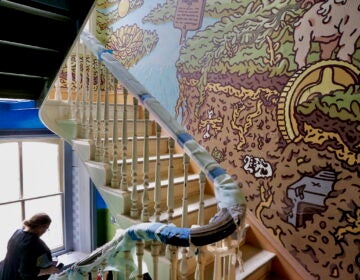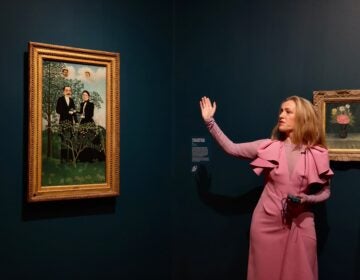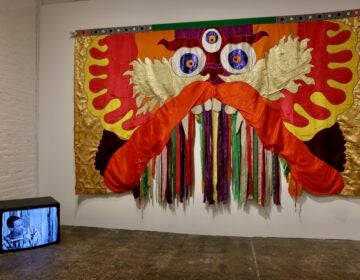Artists taking up residence as Cherry Street pier readies for October opening
The Cherry Street Pier on the Delaware River waterfront is expected to open Oct. 12 with an open-air park, marketplace, food service and bar, and an artists colony.
-
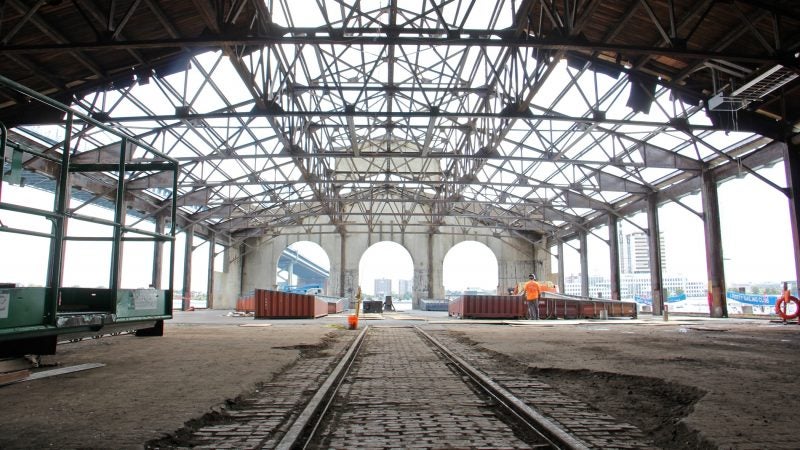
The end of the Cherry Street Pier will remain open to the sky, with trees planted in modified shipping containers. (Emma Lee/WHYY)
-
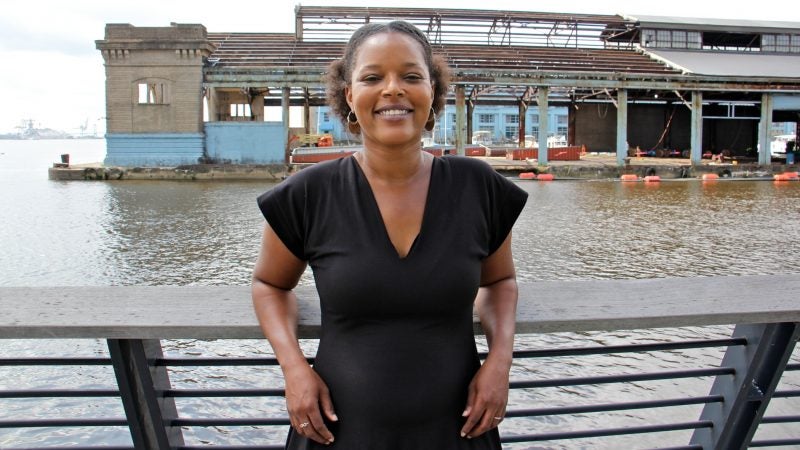
Poet Yolanda Wisher will be among the first 14 artists to set up shop on the Cherry Street Pier. (Emma Lee/WHYY)
-

The Cherry Street Pier, once knows as Municipal Pier No. 9, will become an indoor/outdoor park with artists studios when it opens on Oct. 12. (Emma Lee/WHYY)
The transformation of the old Cherry Street Pier on the Delaware River waterfront in Philadelphia is nearing completion. The formerly dilapidated shipping pier is being rebuilt as a public attraction.
The Delaware River Waterfront Corporation plans to open the 55,000-square-foot pier on Oct.12. The $5 million development will feature a covered marketplace, food service, and a bar. The end of the pier, with views of the Ben Franklin Bridge and the Camden waterfront, will remain open to the elements as a park.
Inside the covered area, 14 artist studios have been fashioned from recycled, stacked shipping containers. Each is double-wide, totaling between 250 and 450 square feet, and outfitted with large glass panels. The public will be able to peer in and see the artists at work.

It’s a “forward-facing fishbowl,” said Joseph Forkin, corporation president.
“This park will be the intersection of public space and Philadelphia’s creative community,” he said. “It will allow the public to directly interact with artists, and to see and learn how art is made.”
The Cherry Street Pier (a bit of a misnomer as Cherry Street no longer runs all the way to the river), formerly Municipal Pier 9, was built about a century ago. It recently served as a performance venue for the Fringe Festival, which has opened its own building across the street, FringeArts, with a restaurant.
The 14 artists selected to occupy the studios include painters, photographers, filmmakers, a textile artist, an installation artist, a doll sculptor, and a poet. They will pay relatively low rent – about $500 for a 450-square-foot space.
Father and daughter James and India Abbott will share one of the studios. He is a photographer who has documented the Ben Franklin Bridge and the waterfront neighborhoods for almost four decades. She is a filmmaker who colors and edits 16mm film by hand at her home in West Philadelphia.

The elder Abbott used to have a studio in the old chocolate factory building on Third Street before it was converted into high-end apartments. In recent years he has split his time in Italy, where he teaches photography. Without a permanent studio, he said, the promise of an artist colony at the Cherry Street Pier has made him go all-in for Philadelphia.
“I remember going to the Third Street studio of my dad’s, then watching how drastically that neighborhood changed to become more residential than about makers making,” said India Abbott. “It’s really a privilege to be a sponge in this space and to be making alongside these other artists from so many backgrounds.”
Those artists include Sharif Pendleton, who illustrates by burning wood with a laser, and the city’s former poet laureate, Yolanda Wisher.
“I was excited for the possibilities,” said Wisher. “Then I heard about the laser!”
She will be using her studio for writing workshops and working on her poetry with musicians.

As a collaborative artist, she hopes to interact with her fellow Cherry Street Pier artists. As a poet, she is attracted to the layers of history on the pier in the shadow of the Ben Franklin Bridge.
“When I first came, I was struck by the train tracks running right through the middle of the pier — to be connected to that motion of history,” she said. The original tracks that carried freight from the docks to the rail lines will be kept intact.
“The forward-backward movement between history and the present is something that really captured me.”
The artists selected to occupy the studios are: Yolanda Wisher; Carla Fisher; James and India Abbott; Cori Shepherd; Victoria Prizzia; Sharif Pendleton; Felise Luchansky; Ed Marion; Stacey Wilson; Melody Forrester; and Sue Huang.
The Delaware River Waterfront Corporation expects to add more studios after the first year the pier is open.
The artists are not required to sell their work onsite, nor be onsite at any particular time to interact with the public. The corporation wanted to create an artist colony without imposing any marketplace requirements.
Two nonprofit organizations — Theatre Philadelphia and Orchestra 2001 — also will keep offices in the studios.
WHYY is your source for fact-based, in-depth journalism and information. As a nonprofit organization, we rely on financial support from readers like you. Please give today.





